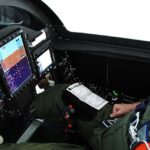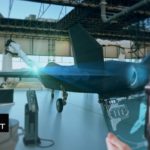Manufacturer and operator ICEYE is the first organisation in the world to launch synthetic aperture radar satellites with a launch mass of under 100 kilogrammes.
The space sector is entering a new phase with commercial players, entering what used to be entirely the domain of state sponsored exploration. FINN caught up with Melanie Clift, ICEYE’s account director for the UK and the European Space Agency.
Satellites are the size of a small fridge
Clift explained why the Finland-based company was so attractive to commercial satellite users. She said: “What ICEYE has managed to do is to miniaturize the radar satellite radar spacecraft. So typically these satellites would be a tonne or two tonnes and you would need an anchor customer in the background, such as a government, to be able to afford to launch such a large satellite.”
“What ICEYE has done is they’ve miniaturised it to be sub 100 kilogrammes. So about the size of a small fridge. And what that means is the cost reduces and you can start to launch many more of these things. So what’s exciting is that instead of a constellation of two or four, you can start to afford to have a constellation of 10, 12, 14, up to 20, 24 or so. And that gives you frequency of revisit that you can come back and look at the same point on the earth again, and again multiple times a day, which hasn’t been possible before.”
More satellites mean more frequent monitoring
So far, ICEYE has launched five satellites. The company is using three satellites at the moment two more prototypes and has launches scheduled for four more satellites this year – two in September, two in December.
Cilft added that ICEYE was aiming to achieve a constellation of between 18 and 24 satellites. “With that number of satellites,” she added, “We should be able to look back, come back to the same spot on Earth every three hours, which is, is very disruptive compared to what we can do currently.”
Clift explained that the satellites would not relay images constantly but users would be able to monitor areas at significant times. ICEYE’s satellites can pick up changes as small as a couple of millimetres. Clift explained: “Because we’re sending down a radar pulse, which is an active pulse down to the atmosphere down to the net receiving the signal we receive back again. That means it can penetrate to clouds and penetrate to darkness in a way that’s not feasible, not possible with an optical satellite.”
FIA Connect focuses on Space Talent
The change detection allows users the opportunity to calculate any differences in measurements between satellite passes, for example, a dam where there may be some movement around the site or after an earthquake.
Clift will be taking part in FIA Connect’s Space Talent: Accessing it & Being it session which looks at what youngsters need to know to launch their career in Space. She said the industry was an exciting one to work in as the rate of change and progress was so fast.
She said: “You can see the improvements for example, getting from 20 metre resolution on our first satellite back in January 2018 to now be at 25 centimetre resolution two years on, and there’s a wealth of functions that sit behind that. So, the more traditional elements such as engineering, electronic engineering, mechanical engineering, software engineering, of course, because we have a large processing element both on board and on the ground, and then all the other functions so sales, marketing, finance, HR, etc. We need all of those things as well.”
Space Talent: Accessing it & Being it takes place on July 24, 2020 from 16:40-17:10. Further details can be found at https://connect.farnboroughairshow.com/Agenda

